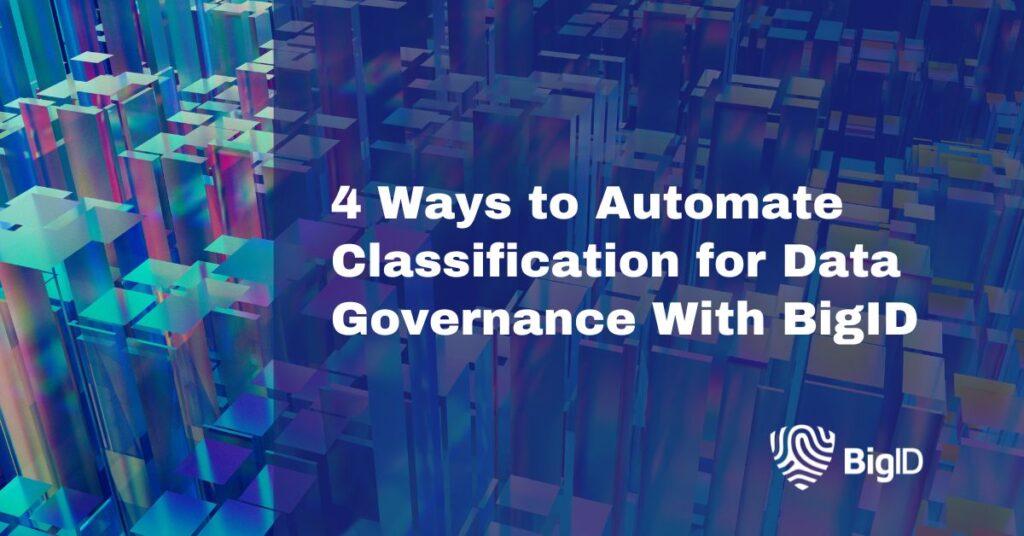The first step in data governance is discovery. Classifying, or knowing what data you have is essential to understanding what data you are responsible for governing. Only then can teams assign appropriate policies that manage access to reduce risk and increase data trust. BigID customers benefit from scalable and accurate auto-classification for data governance.
Here are four ways that BigID auto-classification makes data governance complete, consistent, and efficient.
1. Automate labeling with metadata classification
BigID automates classification using patented ML to identify data and add descriptive labels and attributes. We know that data can be messy, so we don’t depend solely on column titles. Instead, BigID classifies data more accurately by analyzing samples of the physical data and considering the context of how that data is related across sources. Labels and attributes are automatically assigned to data based on out-of-the-box and custom classifiers that identify data important to your organization. Once you know what the data is, then you can identify what needs to be governed, how it can be used, and what needs to be protected.
2. Build and maintain a complete and consistent data inventory
Organizations struggle with consistent data governance because data comes in various forms, stored in several data sources, or owned by various siloed departments. BigID offers a single platform to manage structured and unstructured data across all data sources. The benefit of classifying data from a centralized platform is consistent labeling applied across all of your data. When your organization applies access privileges, data quality assessments, or privacy policies to be compliant with regulations, you need to apply those policies to all relevant data. For example, for sensitive account numbers, you need to identify where all of the account numbers are in your data, classify that data appropriately, and make sure that the records are governed with appropriate access and protection.
3. Enrich catalog with privacy and security data details
Auto-classification with BigID extends functionality to enrich your data catalog with privacy and security details. Automated labels and warnings surface sensitive data for awareness, eliminating the need to manually identify data. BigID’s native catalog is populated automatically, allowing BigID to connect external data catalogs with classification. Security teams benefit with visibility that sensitive data is secure to reduce risk. Privacy teams benefit with confirmation that private information is protected and regulations are enforced. Data Governance, Privacy, and Security teams can track their progress, assess risk, and monitor compliance by running reports and self-audits to proactively identify and correct any gaps.
4. Provide global search across metadata, privacy and security data
Consistent auto-classification enables complete search results. Without automation and ML, identifying all of the different places that data can live in an organization is messy, complicated, and incomplete. Organizations using traditional techniques often miss critical data elements. Machines are better, faster, and more accurate at finding patterns and identifying data than people are. Deploying BigID auto-classification for complete and consistent data labeling means that when you search for a data element, all of your data can be found because it is properly and consistently labeled. This way, a search will properly return all relevant results for governance, privacy, and security.
BigID customers benefit from auto-classification for scalable, consistent, and accurate governance over all of their data to:
- Increase the value of their data with complete and consistent identification and definitions
- Increase customer trust and brand image with responsible data practices
- Decrease the risk of data exposure to avoid large fines for privacy non-compliance
Contact us for a demo to see how BigID can apply auto-classification to help achieve your data governance goals.

